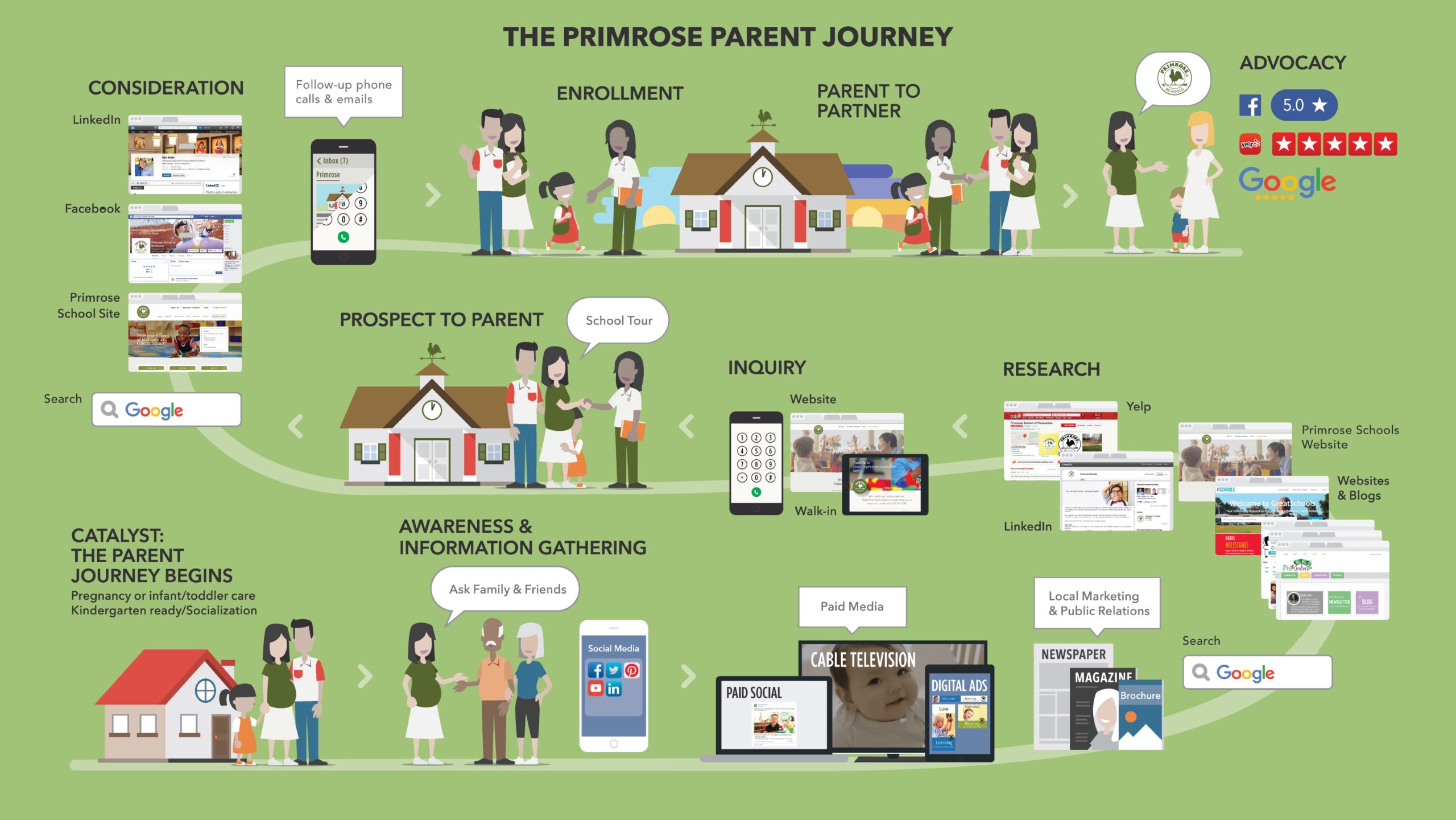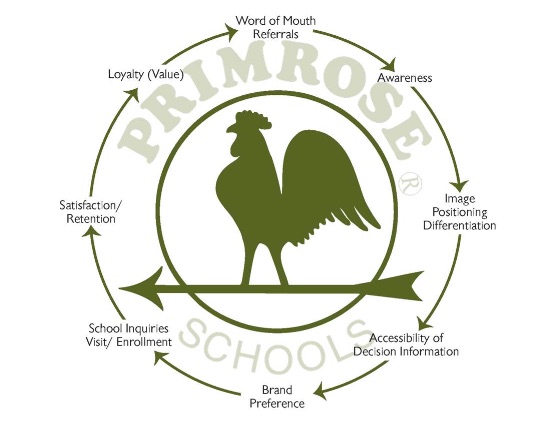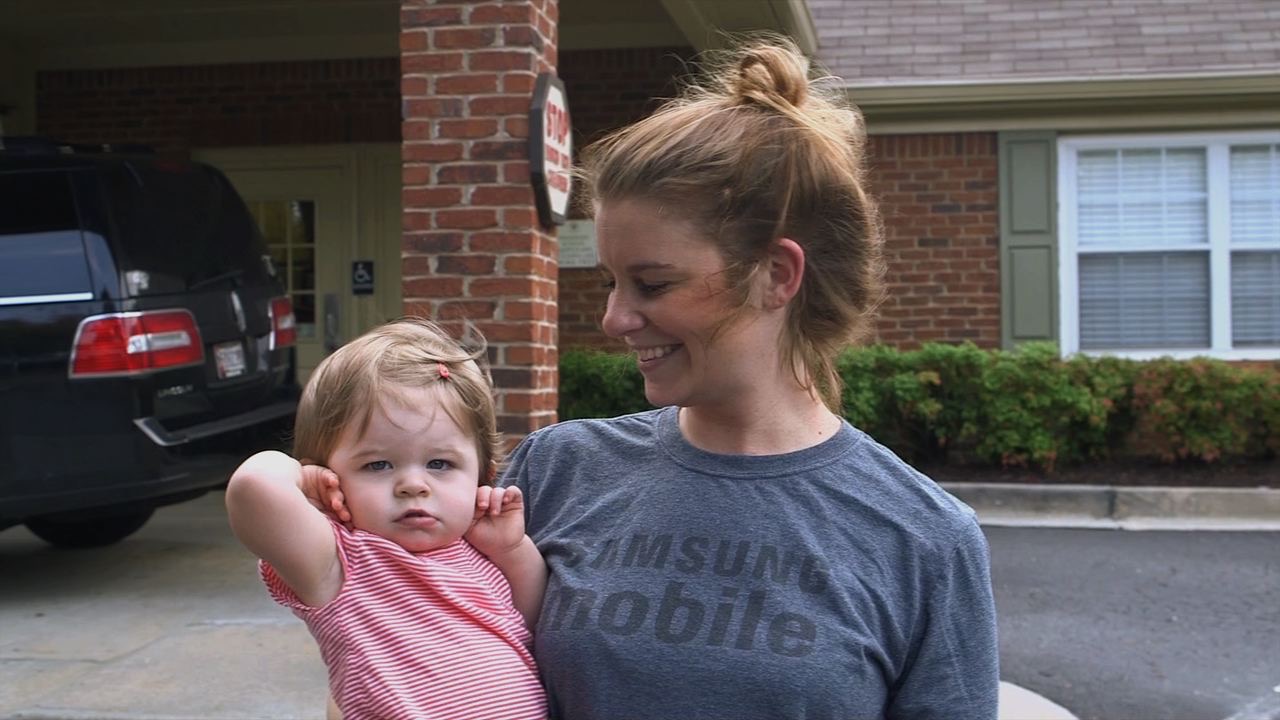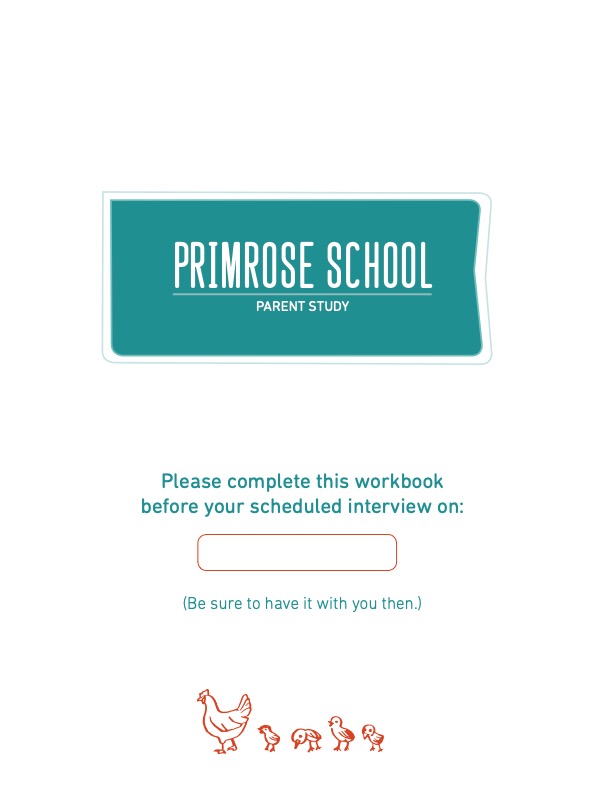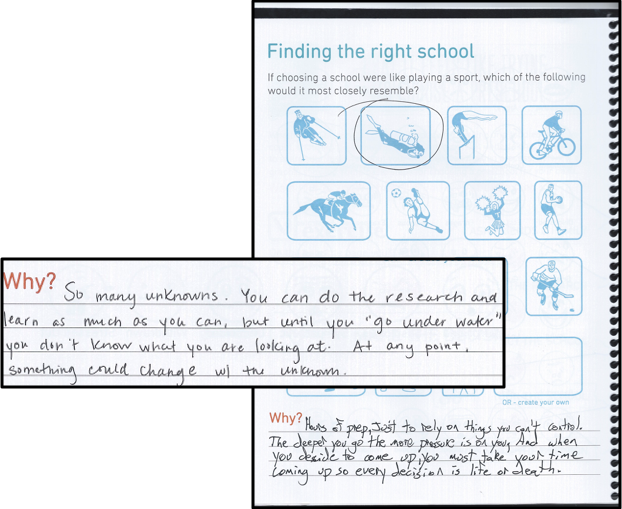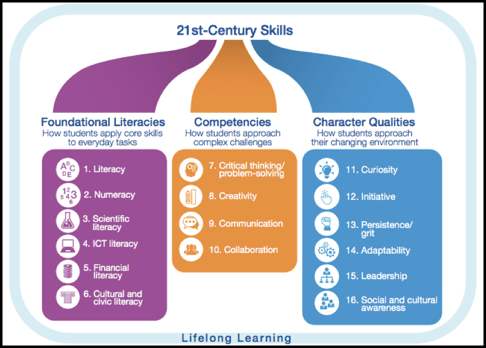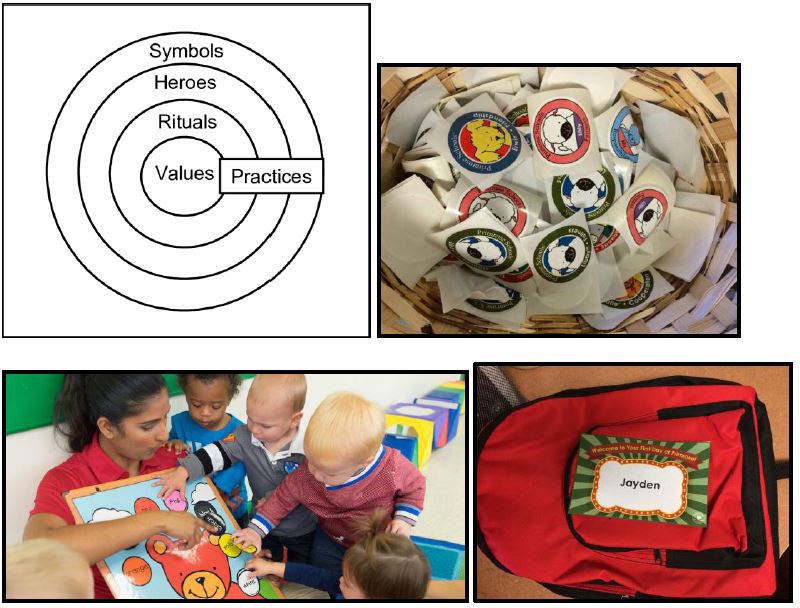This case study demonstrates the radius of influence that ethnographic insight can have throughout an organization as well as how it can be tied to business outcomes. This case also represents the power of video ethnography as a robust and enduring data set that provides a visceral, contextual, human record capable of aligning and galvanizing cross functional teams. At the cusp of aggressive expansion, Primrose Schools needed to address cascading business issues: low brand awareness relative to key competitors in new markets, brand engagement (vis a vis online content), and disappointing conversion rates for Parent enrollment. The first half of the case describes the design and key findings from our Parent Enrollment Study. Early education in present day America is contextualized against a backdrop of new parenting philosophies, socio-cultural relationships with smartphones and social media, and wage stagnation. The second half of the case illuminates how broadly the ethnography-inspired insights were embraced, orchestrated, and manifested across the entire organization and their strategic partners to drive results. In the end, this is a story of the measurable business impact that is possible when ethnographic insights are socialized and operationalized at scale, in large part due to skilled video analysis and editing that ingrained a realistic depiction of today’s Parents in the hearts and minds of everyone at Primrose Schools.
BUSINESS CONTEXT
Founded in 1983, Primrose Schools is a nationally recognized, premium-priced leader in early childcare and education consisting of over 400 franchised schools across the U.S. and over 11,500 employees (the majority of which are preschool Teachers). Primrose enrolls children from 6 weeks to age 5; the national average for tuition is around $250 per week, per child. The company is on pace to become a billion-dollar enterprise by the end of 2019.1
At the cusp of aggressive expansion, Primrose needed to address cascading business issues: low brand awareness relative to competitors in new markets, brand engagement (vis a vis online content), and disappointing conversion rates for Parent enrollment. “Balanced Learning” is their proprietary curriculum; or theoretically, what makes Primrose worth paying more for. However, metrics (brand KPIs) suggested that it was an underperforming asset in driving brand equity and differentiation.
The researchers were initially engaged to address the disappointing conversion rates – the point at which an interested Parent prospect enrolls their child. Primrose already had a well-defined “Parent Enrollment Journey Map” and uses sophisticated programmatic media tools to serve content, drive online engagement, and evaluate behavior in order to move prospects toward scheduling a school tour, where the ‘sale’ is closed. Here is an example of just how highly developed the data analytics piece of the Journey Map is: If mom is upstairs researching preschool ratings and reviews on her iPad and Dad is downstairs checking football scores on his phone with the TV on, Primrose knows this and will push them both unique versions of some awareness-building content.
This means that every digital ‘touch point’ on the Enrollment Journey is monitored and optimized – from search terms, to site visits, to downloads, to mapping, to comments on social media.
Despite the predictive model, they were not enrolling the anticipated number of Parents upon completing the school tour – the ‘point of sale’. Why was enrollment falling below what the model projected? What was the disconnect between Parent prospect expectations and the actual firsthand experience with the brand?
CULTURAL CONTEXT
Today’s new Parents, generally described as between the ages of 25 and 45, happen to be the most educated cohort ever in the U.S. They also happen to be employed in an era of flat wages, more hours at work, and school debt.2 For those families who have prioritized education, and want the structured child care environment of a “school” vs in-home, they make some pretty big sacrifices to afford Primrose-level care.
This cohort is at the forefront of parenting in the so-called ‘attention economy’ – an age of decreased attention spans, increased stress, and demand for personalization.3 Additionally, these young Parents are raising children in an Internet-first world. All of this impacts the way today’s new Parents form opinions, make decisions, and communicate.
The importance of early education has been in the zeitgeist now for a while – policymakers, business leaders, parents, and the public are generally in agreement with regard to how critical it is to invest in and prepare young children. But prepare them for what? Given the speed and complexity of the world today, it’s hard to imagine what the economy and society will need in 2035 – about the time a preschooler today will enter the workforce.
There is high demand and a competitive market for quality early education. One of the most valuable assets a school brand can have is the Teachers who deliver the curriculum. Happy thriving children are associated with good Teachers and that drives a virtuous cycle of word of mouth and brand equity. It bears mentioning that Teachers are also contending with these cultural factors too, not only as professionals, but in many cases, as young parents themselves.
UNDERSTANDING TODAY’S PARENTS: RESEARCH METHODOLOGY
Primrose recognized that while their schools enjoyed top ratings and positive reviews, the brand needed to more deeply understand the needs of this new cohort of Parents in order to address conversion and position itself as the more culturally relevant leader. Franchise Owners mostly came from another parenting era (and economic life stage). What seemed to be missing at Primrose was a dialogue around what today’s young Parents value in child care versus parents raising children in the pre-digital/pre-mobile technology/pre-automation world. This also imparted a need to mindfully design the research methodology to accommodate for the particular stresses and distractions of this new Parent cohort.
The researchers began by conducting an audit of existing primary research to date and proprietary information. They also looked at data optimization metrics from the Parent Enrollment Journey in order to identify gaps in understanding about what motivates the new Parent enrollment decision-making. Applying an ethnographic approach, they recommended a study that could humanize and contextualize the hard data captured along the Journey. The researchers recruited Primrose Parents who had recently enrolled, Parents who were ‘shopping’ schools, and Parents who chose elsewhere. The design allowed for multiple and varied engagements that created opportunities for the Parent participants to think privately, make notes, tell stories, have fun, and embellish topics of particular importance to them.
Recruiting: The researchers intentionally conducted the recruiting themselves so that they could begin collecting data upon the first interaction with a Parent prospect. This also gets participants comfortable with the idea of a camera early on. Screening and scheduling took place over a series of text messages, phone calls, and emails. The research was conducted in two markets and the sample consisted of: 10 families across five different schools, a mix of infants and toddlers in the home, HHI $50k+ annually, average Parent age of 33.
Workbooks: Prior to the researchers’ arrival, Parents were shipped workbooks to complete individually, in their own time. The workbooks were designed with thought-provoking exercises that would take approximately 25 minutes to complete. The workbooks were referenced during the in-person interviews.
Sharing meals, hanging out, and riding along to drop-off and pick-up at preschool: The research was specifically designed to include opportunities to spend time with the families going about daily routines (like meals), spending time in the children’s’ play areas to learn about unstructured time, and accompanying Parents in the car during the transitions between the School and home. These interactions were either videotaped or photographed.
In-home and At-school interviews with Parents: The research also included a more structured in-depth home interview which was videotaped. Because understanding Parents’ awareness, interpretation, and comprehension of the Balanced Learning curriculum was so important, stimulus was integrated into the discussion. Parents were also presented with a sample of the Balanced Learning graphic (which is prominently displayed at the School) to get a quick read/reaction. The researchers designed an image sort to elicit projections of what Parents would like to imagine that something called ‘Balanced Learning’ meant.
School Tours/Mystery Shopping: For the few Parents who were still ‘shopping’ a preschool, the researchers accompanied them (under a ruse as relatives) as they toured a Primrose School. This created an opportunity to videotape the Parents’ immediate reaction once everyone got back into the car.
School Observation: Finally, throughout the fieldwork, the researchers spent time talking to staff and observing daily routines in five different Primrose locations. This was not videotaped.
INITIAL ASSIGNMENT: IMPROVE CONVERSION
New Parents are naturally overwhelmed; this does not change from one generation to the next. However, from the very first recruiting calls through the fieldwork, the researchers quickly noted a very contemporary version of what ‘overwhelmed’ looks like today: long commutes to work, demanding schedules, constant interruptions, pressure to get on waiting lists pre-birth, shortened or unpaid maternity/paternity leave, and logistical hurdles.
A refrain heard over and over was “my child is going to spend more waking hours with that Teacher than with me” and “by the time we get home, all we have time for is feed, bath, bed”. This time calculation becomes a lens through which Schools are evaluated: who are these people and what does ten hours a day look like at the School? Will they love my child and be building him/her up?
The researchers learned that early in the Enrollment Journey things like safety, security, and cleanliness were important topics researched online and that pedagogy was explored on the website. Parents exhaustively sought input on all of these things from other parents in the community and on social media. Media metrics (e.g. SEO, Google Analytics) bore this out and subsequently the interpretation of the data was that these things were key topics to cover in the School tour.
With regard to the Balanced Learning curriculum, Primrose assumed since prospects engaged with white papers and academic content that Primrose posted online, that Parents understood it.
An early, important realization that the researchers had was that up until the tour, all of the ‘touch points’ in the Parent Enrollment Journey were mediated experiences; meaning, Parents were relying on the opinions and perspectives of others. Parents have no gut instincts to operate from leading up to the tour. Gut instincts come from being able to use your senses. The tour is usually their first sensory input and face to face interaction. Cues received on the tour inform the necessary gut feelings to believe that Primrose is a safe and loving learning environment where their child will thrive.
In conversation, Parents consistently indicated that the make-or-break enrollment decision came down to a feeling or an observation made on the tour. A few examples:
- A School Director giving a tour in heels and dangling earrings. “She doesn’t look like someone prepared to step in if a classroom needs extra help.”
- Teachers who don’t make eye contact or interact with the Parent prospect. “We don’t need to be best friends but you’re going to be raising my child with me so we should at least have a chance to talk.”
- Feeling judged by the School Owner. “I think she gave a lackadaisical tour because she saw this (gestures to husband’s long ponytail) and thought we couldn’t afford it.”
- Balanced Learning was an artifact “from Corporate”. “I remember seeing something in the brochure about it but the Director who gave me the tour never talked about it.”
Parents needed something very specific from the tour in order to commit – reassurance that the humans at Primrose were decent people, a visualization of how Balanced Learning plays out during a day, a sensed collaboration in raising their child. They did not want to be led by a docent pointing out evacuation routes and cleaning procedures and educational toys. They wanted eye contact and conversation with Teachers. They wanted a demonstration of how a Teacher can use a puppet to teach values. They wanted to smell lunch, hear songs, and touch nap blankets.
The researchers observed Parents tear up, get dizzy, and feel queasy with guilt while School directors faithfully lead them through a scripted tour. Parents were projecting into the emotions of letting go while pragmatic words washed over them. One Parent described the feeling as “like jumping out of an airplane”. Another described it like scuba diving where “The deeper you go, the more pressure is on you. You must take your time coming up so every decision is life or death”.
Excerpts from the workbook that Parents completed prior to the in-home visit.
OPPORTUNITY REVEALED: RE-CALIBRATING THE BRAND EXPERIENCE
These larger realizations that Parents worry most about the length of time their children are in the hands of strangers, and their need to feel in their gut that they are making the right education decision, opened Primrose up to an entire examination of how the brand could be more empathetic beyond simply reimagining the school tour. Because an ethnographic approach was used and interactions were captured on video, there was a vast amounts of rich, organically generated data.
Significant themes and insights that the research brought to the forefront:
A New Peer-to-Peer Generation of Parents
- Today’s Parents want the School to treat them like peers. The Primrose brand struck an authoritative ‘one to many’ tone that was off-putting. Parents today are more accepting that there are multiple approaches to learning (and parenting), have access to the same information as anyone else, and prefer language that doesn’t feel judgmental.
- Today’s Parents see conflicting ‘expert’ information all of the time (e.g. co-sleeping with your child is good/bad, your child should sleep on its back/stomach, and so on). Just because Primrose posted it, doesn’t make it true.
The Enrollment Decision is More Highly Involved Than the Journey Map Suggests
- While Primrose understood that the Parent Enrollment Journey wasn’t experienced in a linear fashion, they approached its creation from a media perspective – digital touch points that could be measured and optimized. As a result, this study identified important emotional inflections in ‘real life’ that deserved to be represented on the Journey Map in order to truly understand Parent motivations.
- The researchers identified what they called “the decisions before the decisions”, essentially the conversations (and arguments!) that Parents have even before they begin online research and asking friends and family. These were discussions about how much money preschool was worth (should it be more than a mortgage payment each month?), whose job was more flexible for pick-up/drop-off duties, and what their own childhood memories of preschool included.
- A nuanced implication of this more emotional, offline, missing piece of the Journey was understanding just how exhausted Parents are on the topic by the time they actually visit the School.
A New Era of Parenting Styles
- School Owners were used to previous generations of Parents who valued specific learning milestones and achievements as signs of preparation (e.g. learning to read before Kindergarten). Today’s Parents spoke of wanting curiosity nurtured, self-expression, and to instill a love of learning. “When my child says ‘look mommy, it’s raining outside’, I want him in that moment of wonder about rain. I don’t need him spelling r-a-i-n.”
- Culturally, there is a shift away from the reassured child (e.g. participation trophies) toward the resilient child.4 Being adaptive is a 21st century skill.
A new way of determining the value of their tuition investment
- Young Parents put as much emphasis on social skills and character building as they do on literacies and competencies at this age. When asked to imagine the most valued traits in 2035, Parents said things like tolerance, kind-heartedness, and work ethic. Parents were seeking social preparation as much as academic preparation. They described a world where their child will have to get along with “other”…be it human or machine.
- Balanced Learning was something vaguely recalled but never really internalized. As presented, it was too academic; jargon got in the way of meaning – so much so that School Directors weren’t even able to be comfortably fluent about key points of difference in the curriculum.
- Parents come to the tour with a grasp of early education concepts but cannot locate where Balanced Learning sits among them (unlike, say, Montessori). This inhibited word-of-mouth about the very cornerstone of the brand and its value proposition.
Character Qualities emerge as a critical pillar of education.5 Jobs that require social skills grew 24% between 1980 and 2012.6 Graphic © World Economic Forum, used with permission.
A New Kind of Relationship
- It’s not just enrolling in child care; it’s joining a community. Parents are looking for a preschool with shared values, not just credentials. Primrose is a culture unto itself.
ETHNOGRAPHIC INSIGHT: SCALED AND OPERATIONALIZED
The research was originally commissioned by the Chief Marketing Officer at the behest of his creative marketing agency who was at a loss about how to change content and messaging relative to improving conversion. Upon presenting the full scope of our findings through theme-based video vignettes, in conjunction with relevant quantitative Journey metrics, the CMO felt the immediacy and potency of the work. A workshop was scheduled to more broadly share the insights and their applications to cross-functional leaders: School operations, professional development/training, curriculum development, corporate communications, and service design.
The research video figuratively put the Parent in the room. Existing strategies were evaluated through this fresh, contemporary lens of today’s new Parent. Over the course of six months, every discipline implemented a set of core principles to evaluate and evolve their executions. Below are just a few examples of the application.
| Prior to doing ethnography… | Evolution as a result of ethnography… |
|---|---|
| Brand tagline: “America’s leader in Early Education and Childcare” | “We believe that who children become is as important as what they know” |
| Content: Statistic-heavy, academic research and an authoritative voice | Balancing gravitas with example-rich, practical everyday insight with an approachable voice (e.g. moving from “studies show” to “we believe”) |
| Advertising: focused on literacies and competencies | Put equal emphasis on character building |
| Balanced Learning: communication focused on what children learn | Communication and demonstration of how children learn |
| Balanced Learning “philosophy” | Balanced Learning “approach” |
| Balanced Learning: discussed on the website and in the brochure; a graphic in every School | Show me, don’t tell me: Simplified language, re-designed graphic and relatable examples on the website; demonstration-based examples throughout the tour; “Balanced Learning in Action” communication platform integrated in advertising and delivered as photos and texts sent to Parents |
| Tour: a scripted monologue focused on pragmatic features of the School. | Tour as a dialogue. Active listening. Deliberate pauses for Parent emotions. |
| Tour: inconsistent first impressions. | Focus on first 6 feet, first 60 seconds |
| Journey Map: measured media-oriented | Journey Map was revised to include “decisions before the decision”, emotional arc, and key offline conversations |
As the researchers led cross-functional teams through workshops of ethnographic insights, the “Manifestation of Culture”7 model became an incredibly simple and meaningful reference. Primrose leaders were able to see the potential impact of applying the findings and the interdependence of their respective implementations. It helped to orchestrate all of their brand equities and proprietary assets into a cohesive, ownable, defendable and memorable brand experience. The incredible curriculum and value proposition of Primrose Schools was fortified. Importantly, it became easier to talk about.
“The Manifestation of Culture” model. Photos from the study and © Primrose Schools, used with permission.
Primrose codified their values into their tagline “We believe that who children become is as important as what they know”. Everyday greetings, songs, and ‘first day of school’ backpacks became seen as rituals. Teachers, who Parents needed to interact with in order to make the enrollment decision, are our Heroes. Proprietary character-building assets like the “Erwin the Dog” puppet, who teaches friendship, became symbols. School owners then understood that doing things like printing up stickers of the puppets were meaningful practices that bind everyone to the culture. Enrollment was taken out of the context of being a transaction, and placed in a context of starting a relationship.
After Primrose integrated the ethnographic findings into their larger product and marketing strategies, they didn’t stop! This research became the keynote address at the Primrose annual Franchisee Meeting where 600 School owners attentively listened to video of today’s new Parents. To be fair, Primrose has always been sensitive to the unique needs of families. However, this research grounded that understanding in more contemporary terms in order to address the cultural tension in the preschool decision today: how can I know what skills my child should learn when the future is more unpredictable than ever?
Lastly, Primrose Franchisees (aka School owners) asked to take the learning one step further and share it with their School Directors and Teachers. The research footage was converted into a system-wide online “Learning Library” and in-service training day that over 10,500 employees participated in.
Teamwork Makes the Dream Work
When ethnographic insight is socialized and operationalized at this scale, it can inform decisions and actions at all levels of stakeholders throughout an organization. Consequently, it’s not a stretch to attribute results to ethnography. The clients at Primrose proudly credit this work as the catalyst for a brand transformation that yielded the following results, benchmarking 2017 performance against 2016 KPIs:
- 4% growth in Parent enrollment
- Ranked 1st in unaided awareness (31%) among competitors (Primrose was previously ranked 4th)
- 18% increase in inquiries
- 24% increase in engagement (social media metrics) including the highest number of followers and engagement on Facebook vs any other child care company (surpassing KinderCare which is 3x larger than Primrose)
Ethnography has long sought its rightful place in business as a strategic practice and business tool. While ethnography is most likely funded by a singular business unit or discipline in an enterprise, its impact does not have to be limited to its ‘owner’. These researchers believe that video should be seen as much more than a powerful data capture and presentation tool. When footage is treated like a data set (that can continuously be mined) and analysis and editing are intertwined, then video-based ethnography has unlimited applications that in turn help prioritize ethnography as an investment in the business as a whole.
NOTES
1. Primrose Schools. 2015. Proprietary sales, media, and customer care data from Primrose Schools, Corporate Headquarters, Atlanta, Georgia.
2. Richard Fry. 2014. “Young Adults, Student Debt, and Economic Well Being.” Pew Research Center.
3. Ellen Galinsky, Kerstin Aumann, James T Bond. 2011. “Gender and Generation at Work and at Home.” Families & Work Institute.
4. Strottman International. 2015. “The Parenting Shift”. Strottman International proprietary research.
5. World Economic Forum. 2015. “New Vision for Education.” Davos, Switzerland.
6. David Demming. 2015. “Why what you learned at preschool is crucial for work.” Data sourced from U.S. Department of Labor and Harvard University. Appearing in an article for the New York Times.
7. Geert Hofstede. 1990. “Manifestation of Culture.”
REFERENCES CITED
Gerd Gigeranzer. 2007. “Gut Feelings: The Intelligence of the Unconscious.” New York: Penguin Books.
Marcy Whitebook, Deborah Phillips, Carollee Howes. 2014. “Worthy Work, Still Unlivable Wages – The Early Childhood Workforce 25 Years After the National Child Care Staffing Study”, Center for the Study of Childcare Employment, Institute for Research on Labor and Employment. Berkeley, California.

